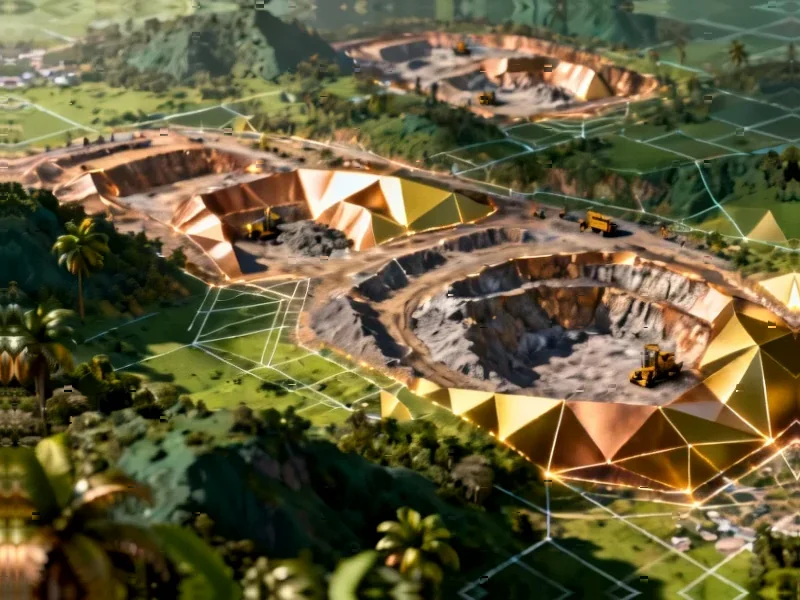Revolutionizing Plankton Research Through Automated Imaging
Marine scientists have introduced a groundbreaking dataset of annotated plankton images from the Mediterranean Sea, according to recent reports. The MedPlanktonSet contains 77,271 taxonomically classified images collected using Imaging FlowCytobot (IFCB) technology between November 2022 and February 2025 at six stations in the Gulf of Naples. Sources indicate this represents the first comprehensive labeled IFCB dataset specifically for Mediterranean waters, filling a significant geographical gap in plankton research resources.
Table of Contents
- Revolutionizing Plankton Research Through Automated Imaging
- The Critical Role of Plankton Monitoring
- Limitations of Traditional Monitoring Methods
- Imaging Technology Overcoming Research Barriers
- Machine Learning Challenges in Plankton Classification
- Addressing the Mediterranean Data Gap
- Multiple Research Applications
- Advancing Marine Ecosystem Understanding
The Critical Role of Plankton Monitoring
Plankton organisms form the foundation of marine ecosystems, supporting fisheries, driving carbon dioxide fixation, and maintaining oxygen production, analysts suggest. Monitoring these microscopic communities is essential for understanding ecosystem functioning and resilience, particularly as plankton has recently been recognized as crucial in addressing what reports describe as the “planetary triple crisis” of biodiversity loss, climate change, and pollution. The report states that plankton monitoring constitutes an integral component of multiple international initiatives aimed at safeguarding ocean health, including the EU Water Framework Directive and Marine Strategy Framework Directive.
Limitations of Traditional Monitoring Methods
Traditional plankton monitoring has relied heavily on microscopy-based methods, which provide detailed taxonomic identification but are time-consuming and require specialized expertise, according to reports. Molecular methods have expanded in recent decades but primarily yield presence-absence data rather than quantitative abundance measurements, and quantification remains challenging. Both approaches generate data at resolutions often inadequate for detecting short-term changes in plankton communities, such as the rapid development of harmful algal blooms, the report states.
Imaging Technology Overcoming Research Barriers
The Imaging FlowCytobot has revolutionized plankton research by automating in situ high-frequency monitoring, sources indicate. This instrument combines flow-cytometric and video technologies to capture high-resolution images of particles ranging from <10 to 150 micrometers. Designed for autonomous deployment, the IFCB can operate continuously for up to six months without maintenance, analyzing approximately 60 samples daily and generating up to 10,000 high-resolution images per sample depending on particle concentration.
Machine Learning Challenges in Plankton Classification
The volume of data generated by IFCB systems necessitates machine learning algorithms for efficient processing, according to analysts. These supervised classification algorithms require training sets of manually labeled images, which presents significant challenges. Reports suggest that building adequate training sets demands at least 1,000 images per category collected over a full year to account for seasonal variations. With plankton taxonomy expertise declining and rare taxa difficult to document sufficiently, this requirement has limited the development of effective classifiers, particularly for specific geographical regions.
Addressing the Mediterranean Data Gap
Before MedPlanktonSet, no comprehensive labeled IFCB image dataset existed for the Mediterranean Sea, according to reports. The most complete existing dataset, WHOI-plankton, contains over 3.4 million images from waters near Martha’s Vineyard, Massachusetts, classified into 103 categories. Two additional datasets from the Baltic Sea—SYKE-plankton and SMHI IFCB plankton image reference library—contain approximately 63,000 and 76,032 images respectively. MedPlanktonSet’s 77,271 images classified into 139 categories specifically addresses the Mediterranean representation gap, sources indicate.
Multiple Research Applications
The new dataset supports diverse scientific applications, according to the report. Primary uses include developing machine learning classifiers specifically optimized for Mediterranean plankton recognition and augmenting existing datasets for broader geographical coverage. Analysts suggest subsets can create targeted classifiers for specific taxa, particularly harmful algae species. The dataset also serves as a “negative dataset” to control classifier specificity for non-Mediterranean regions and supports the development of open-set recognition models.
Beyond classification applications, the report states MedPlanktonSet enables 3D plankton reconstruction through its library of taxa imaged in different orientations. The dataset also shortens training time for plankton taxonomic analysts—a COVID-era study demonstrated that using IFCB images can reduce training time by up to half. Additionally, the associated features provided with each image facilitate integration with size measurement databases and support trait-based ecological studies.
Advancing Marine Ecosystem Understanding
By facilitating the use of IFCB technology with optimized classifiers, MedPlanktonSet ultimately contributes to advancing research on plankton biodiversity and ecology, according to analysts. The dataset’s comprehensive Mediterranean coverage provides crucial baseline data for monitoring programs and supports broader initiatives aimed at understanding and protecting marine ecosystems in a changing climate. Researchers suggest this resource will enable more precise tracking of plankton community dynamics and their responses to environmental changes throughout the Mediterranean region.
Related Articles You May Find Interesting
- Higher Education Faces Widespread Staff Reductions Amid Financial Strain
- Stack Infrastructure Lands $247 Million Green Loan for Tokyo Data Center Expansi
- Investment Analysis: Hewlett Packard Enterprise vs. Dell Technologies Stock Pros
- AI Models Show Promise for Predicting Radiation-Linked Secondary Cancers in Canc
- Generative AI Threatens Open Source Software’s Legal Foundation, Experts Warn
References
- http://en.wikipedia.org/wiki/Sampling_(statistics)
- http://en.wikipedia.org/wiki/Taxonomy_(biology)
- http://en.wikipedia.org/wiki/Plankton
- http://en.wikipedia.org/wiki/In_situ
- http://en.wikipedia.org/wiki/Mediterranean_Sea
This article aggregates information from publicly available sources. All trademarks and copyrights belong to their respective owners.
Note: Featured image is for illustrative purposes only and does not represent any specific product, service, or entity mentioned in this article.



